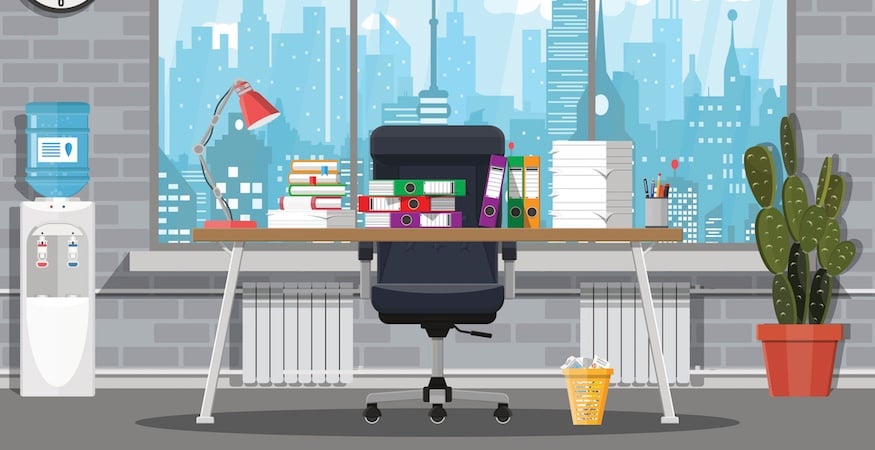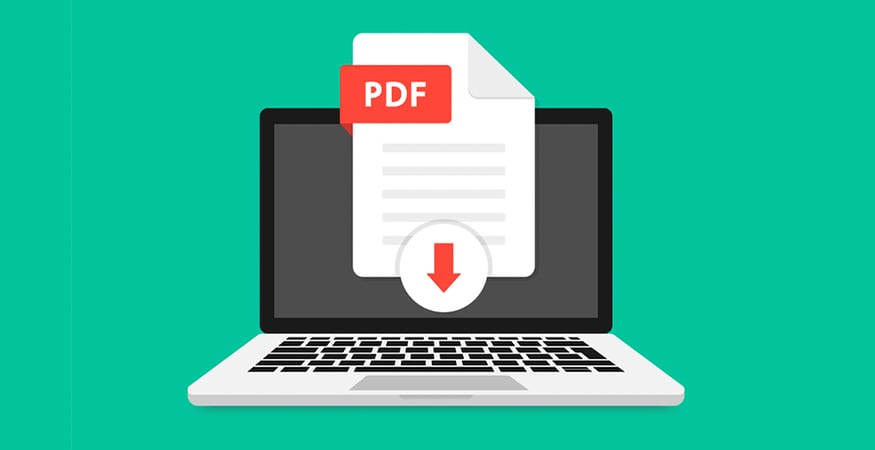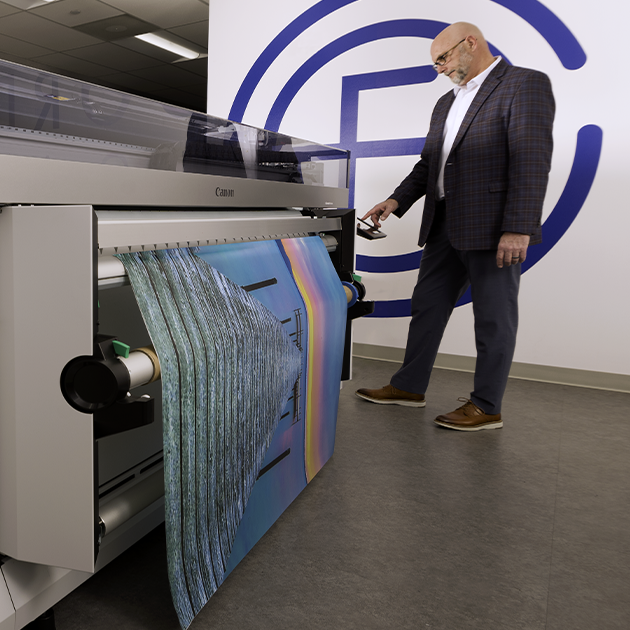Businesses are always looking for ways to trim budgets and improve efficiencies. Often, it’s the bigger expenses that get noticed and, therefore, tackled first: labor, inventory, equipment, etc. But unaddressed, hidden operational expenses can add up and make the difference between profit and loss.
One such expense is printing costs, and many businesses chalk them up as a necessary expenditure. Wondering if your organization’s print costs are out of line? There are two ways to get answers.
Two Ways to Determine Printing Cost-Per-Page
The first and easiest way to determine print cost-per-page is to ask a qualified Managed Print provider to conduct a thorough assessment of your paper and toner usage, plus maintenance of your printing equipment. This type of assessment is often done for free, so it’s worth taking advantage of this service.
The second way is to gather all your own data for each device and calculate those expenses on your own. In general, you will need to keep track of your cartridge prices and divide the cost by the total number of pages printed during the month. A printed page is considered anything with 5% page coverage or more.
In a nutshell, here’s the formula: Over the course of a month, divide your cartridge price by your cartridge yield for each device to determine how many cents per page it’s costing you.
No matter which method is used, it’s important to go beyond this simple formula. There are many other ancillary costs to consider, and most are shocked when they discover the wasted resources, time and money.
Here are factors that can help you determine your true print cost per page, along with cost savings tips for reducing unnecessary expenses:
- Equipment lease or purchase price
- Ink or toner cartridges
- Desktop inkjet printers
- Black and white and color usage
- Paper
- Energy use
- Employee time
- Security Risks
1. Equipment Lease or Purchase Price
If you’ve purchased your own printers and copiers, you’ll need to look at more than just the figure on the bottom of the invoice. Additional expenses should also be factored in, including unexpected repairs, parts and service costs. You’ll likely find that, as time goes by, those residual costs will escalate as older machines break down more frequently and simply cost more to run. Obtaining parts for many older machines will also become difficult as the equipment and parts become obsolete.
COST SAVINGS TIP: Consider revisiting any existing equipment service agreements, and check with a Managed Print provider to assess if leasing or renting will result in greater savings. Leasing or renting printers helps even out cash flow by providing an inclusive service agreement with a set monthly fee, including labor, parts and even toner for most plans.
2. Ink or Toner Cartridges
Inkjet desktop printers and color laser printers are sometimes forgotten about because they’re usually inexpensive or may not even be linked to a network.
However, printer ink for these types of devices is way more expensive than gasoline. In fact, black ink for printers ranks as one of the top 10 most expensive liquids in the world, topping out at more than $2,700 per gallon! When you consider that desktop printers use up to 300% more ink than a multifunction printer, it can end up costing three to four times as much to operate.
COST SAVINGS TIP: Because of the high cost of toner used in inkjet printer cartridges, eliminating their use where possible can result in significant savings. Using compatible cartridges from reputable sources is also important.
3. Desktop Inkjet Printers
Let’s talk more about those desktop printers. The assumption is that because desktop printers are inexpensive, their impact on printing costs and the overall budget is likely minimal, right?
While the purchase price has come down for many, their life expectancy has come down with it, requiring more frequent repairs and replacements. These factors make desktop inkjet printers practically disposable, especially in business settings. The lower purchase price can give a false sense of savings, but when you factor in printer ink prices combined with long-term replacement costs, it can actually end up being much higher.
COST SAVINGS TIP: Consider the impact of adding more plastic to landfills and, in case the message isn’t clear, get rid of cheap desktop printers whenever possible.
4. Black and White and Color Usage
Modern multifunction printers not only provide reports regarding how many copies are printed, but how many of those copies are in color versus black and white. Color copies can cost three times as much as black and white. Reviewing these reports regularly can expose savings opportunities. Consider that, even if a document has a single word or logo in color, the entire document is considered a color copy.
COST SAVINGS TIP: To minimize unnecessary color printing, make sure the default settings on your printer are set to black and white. A Managed Print provider can set up quarterly reviews to assess your usage and provide recommendations for minimizing unnecessary color copies.
5. Paper
A simple look at an invoice can help determine your actual paper costs. What’s a bit more difficult is knowing how much of that paper is wasted each month. Studies estimate that anywhere from 17–45% of paper printed in offices ends up in the trash.
Even though paper may only cost an average of half a penny per sheet, it adds up quickly, especially for larger corporations. Considering the average office worker uses a staggering 10,000 sheets of copy paper every year, you can quickly realize the potential savings.
COST SAVINGS TIP: Printing on both sides of paper can cut costs in half, and implementing print management software along with printing best practices can help eliminate most wasteful printing.
6. Energy Use
Energy use of printers is often underestimated, especially with a big fleet. Older machines cost more to run, and not all newer devices operate the same. As is true with newer home appliances, many multifunction printers are ENERGY STAR rated.
Canon, for example, was recognized for qualifying nearly 100% of its product line to ENERGY STAR specifications. Some machines operate with one-third the energy of comparable devices with the use of sensors that put a machine in sleep mode when not in use.
COST SAVINGS TIP: Consider upgrading your equipment to new, energy efficient models to experience the energy-saving benefits they offer.
7. Employee Time
Labor is often considered a soft cost and is difficult to accurately calculate, yet it’s an important element in the equation. Consider that some IT departments spend up to one-quarter of their time fixing print issues such as repairing machines, fixing network interruptions, managing downtime and troubleshooting.
COST SAVINGS TIP: Implementing Managed Print services can eliminate these soft costs and allow your IT professionals to focus on critical functions.
8. Security Risks
Cybersecurity is a major concern for most organizations, and the average cost of a security breach can put even the most lucrative company out of business. Securing network printers is imperative. But did you know that about half of all data breaches are paper-based, meaning people can walk up to a printer and simply pick up a printed document with confidential information or intellectual property?
COST SAVINGS TIP: To safely print confidential documents on a shared printer, ensure that measures such as pull printing, card readers or PIN access are in place.
It’s likely that once you gather all the data from these various factors, you’ll realize the negative impact that wasteful printing practices and outdated equipment have on your bottom line. As noted, one of the best and most accurate ways to calculate your total print costs is to request a free assessment from a Managed Print provider.
If you’d like assistance with this process, please reach out to the experts at Gordon Flesch Company.










